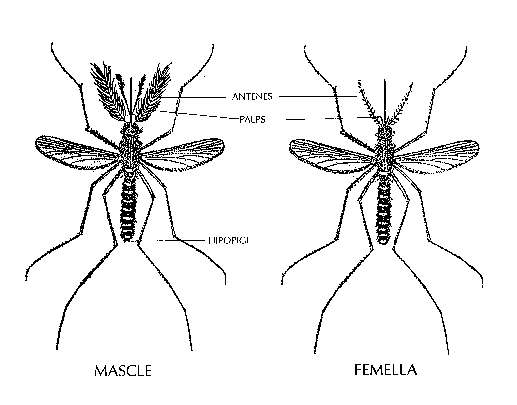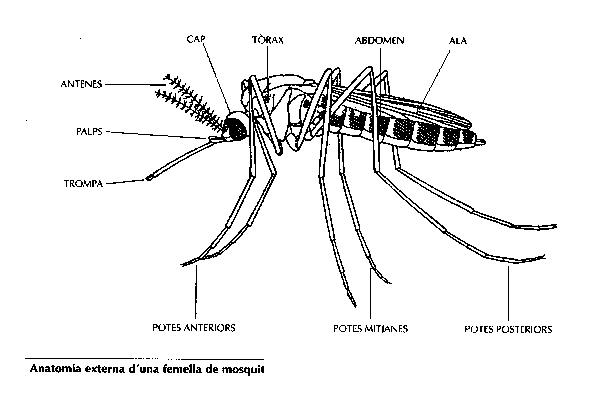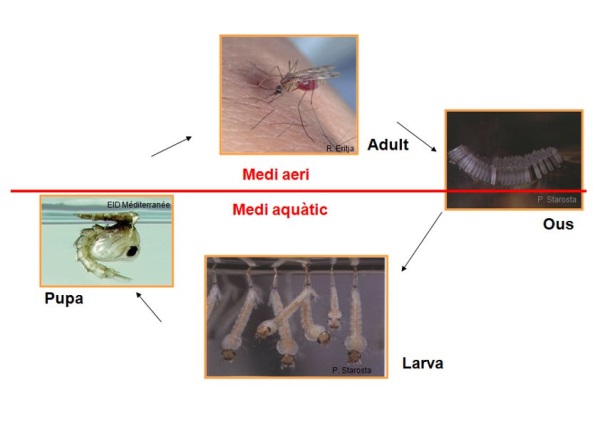Although both male and female mosquitoes usually feed on nectar from plants, females require a very rich food supplement to be able to develop a large number of eggs. This nutrient-rich supplement is usually the blood of different vertebrates.

Thus we find that all species do not bite man, an important element when establishing their control. Species of the G. Aedes, Ochlerotatus, Anopheles and Culex are the most important to consider.
Mosquitoes tend to bite at dusk, the resting time of their hosts and where the presence of possible predators is still limited. It should be noted for its importance at the level of discomfort the ease that Aedes have to bite at any time of the day.

Fertilization of females takes place at the time of adult birth. A certain synchrony is verified, where the males usually emerge before the females, establishing copulation clouds where, when the females pass through them, they become fertilized. The spermatozoa will be housed in the spermathecas, in sufficient numbers to fertilize all the eggs that the female will develop throughout her fertile life.
The life of mosquitoes is usually very short, once the males have achieved their copulation mission (genetic variability) they usually disappear. The life of the females is a little longer and depending on the climatic conditions it can be weeks or even a couple of months. In this period she will be able to complete 4 or 5 bets.
A key element for the biological cycle of mosquitoes is the winter period, an unfavorable time due to climatic conditions for their development. This conditioner is solved in different ways and is usually characteristic for each species. Some can pass it in the larval phase (Culiseta), eventually giving large larvae. Others in the egg phase (Aedes, Ochlerotatus) which, thanks to certain adaptations against the drying out of their wrapping, can remain deposited in the ground for up to several years. Finally, others will pass it on in the form of adults (Anopheles), generally last generation females, already fertilized, which will remain in protected places where the temperature and humidity conditions do not vary much, and will be the ones that once this unfavorable period and after ingestion of blood will develop the next generation.




